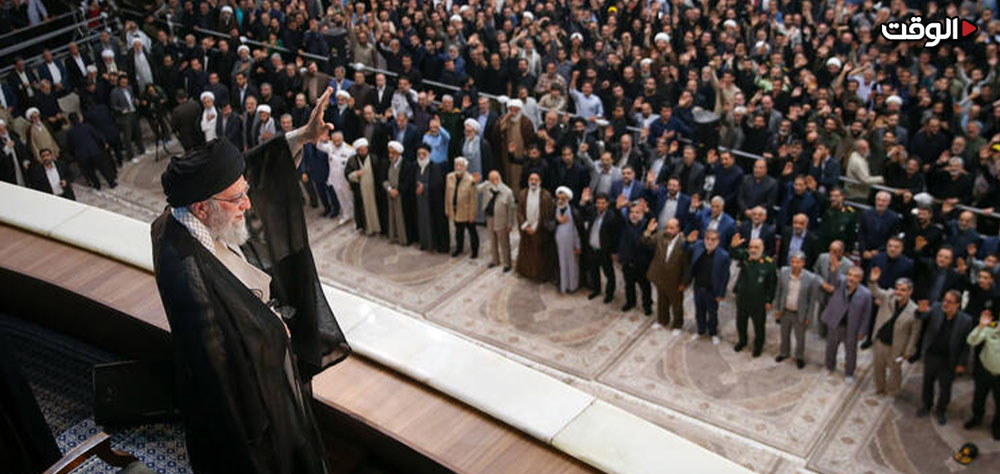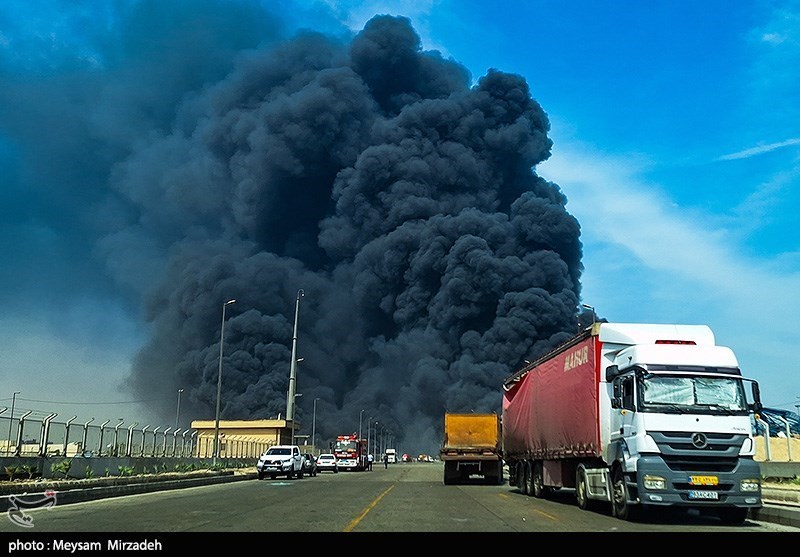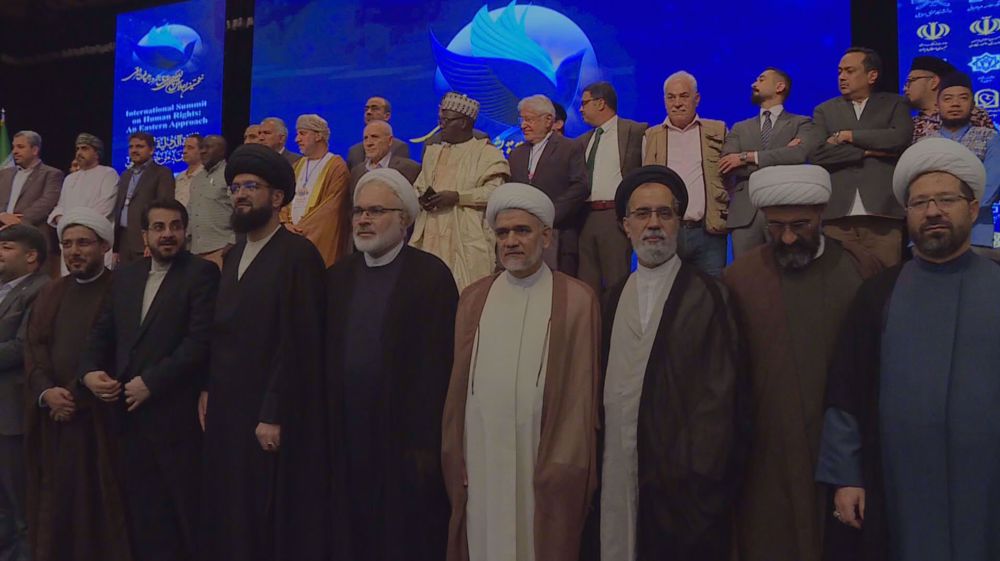- US, Israel Strategy for Lebanon Is Failed State
- Protests against Al-Jolani’s Govt. Boil Over in Syria after a Year of Suppressive Rule
- Iran Urges Pakistan to Deepen Strategic Cooperation, Says Security Chief
- Satellite Images Show Israel Strengthening Southern Lebanon Outposts
- Three Killed in Israeli Strike on Gaza as 15 Palestinian Bodies Are Returned
- Hidden DOJ Memo Challenges Trump’s Account of Boat Strike
- Peaceful Protest by Alawites Met with Gunfire From HTS
- Does Larijani’s Pakistan Visit Mean Tehran-Islamabad-Riyadh Alliance on the Way?
- Beirut Assassination: Tel Aviv’s Dangerous Game and Mystery of Hezbollah Response
- Muscat Forum, a Path for Understanding and Convergence in Persian Gulf Region
Editor's Choice
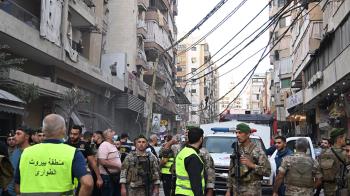
Beirut Assassination: Tel Aviv’s Dangerous Game and Mystery of Hezbollah Response Israel is seeking to take Hezbollah into a new confrontation, but the latter has its own calculations and game.
What’s Driven Public Trust in Resistance Factions in Iraq Vote? The Iraqis find effective forces in the resistance groups that do not restrict themselves to military sphere and have worked to stabilize national economy.
Gaza Disability Crisis: A Non-healing Wound Thousands of Gazans have suffered organ amputations, making it hard for them to engage in daily life activities.
Two Blasts Signal Deadly Game in South Asia The Pakistan and India blasts suggest that a new wave of instability is in the making, raising concerns about broader insecurity.
Mamadani Wins: A Pro-Palestinian Mayor Now Leads Heart of US Capitalism Mamadani does not hide his opposition to capitalism or support to the Palestinian cause.
News
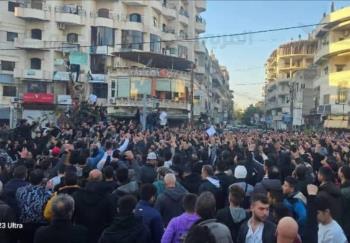
Protests against Al-Jolani’s Govt. Boil Over in Syria after a Year of Suppressive Rule
Protests demand curbing violence against minorities as militias loyalist to government continue violations.Iran Urges Pakistan to Deepen Strategic Cooperation, Says Security Chief The head of Iran’s Supreme National Security Council calls for a renewed strategic partnership with Islamabad
Satellite Images Show Israel Strengthening Southern Lebanon Outposts Satellite images reveal Israel maintains and strengthens military positions in southern Lebanon, a year after its ceasefire with Hezbollah
Three Killed in Israeli Strike on Gaza as 15 Palestinian Bodies Are Returned Gunfire and airstrikes were reported across Gaza on Wednesday as Israel transferred the bodies of 15 Palestinian prisoners under a US-brokered ceasefire
Hidden DOJ Memo Challenges Trump’s Account of Boat Strike Secret DOJ documents outline the rationale for lethal Caribbean boat strikes, at odds with Trump’s stated anti-narcotics policy
Peaceful Protest by Alawites Met with Gunfire From HTS HTS forces fired on mass protests by Syria’s Alawite community in coastal areas, as demonstrators voiced opposition to HTS-led sectarian attacks
Gaza, West Bank Endure Severe Economic Downturn, UNCTAD Reports UNCTAD: Gaza’s economy in historic collapse, West Bank shrinking, recovery could take decades without international aid
Iran and Libya Hold Talks on Bilateral Relations, Regional Issues Foreign Minister Abbas Araghchi met with Libyan Presidential Council Vice-Chairman Mossa al-Koni in Muscat on Monday to discuss bilateral relations
Araghchi Set for Official Visit to France Iranian Foreign Minister Abbas Araqchi is set to visit France this week for discussions on bilateral relations and regional and international developments
Haitham Tabatabai, A Principal Architect of Hezbollah’s Military Strength Haitham Tabatabai, Hezbollah’s top military commander and one of its founding members, was martyred in an Israeli airstrike
Larijani Calls for Strategic, Economic Expansion with Pakistan Ali Larijani, secretary of Iran’s Supreme National Security Council, has urged “strategic” ties with Islamabad
OHCHR: Israeli Attacks on Lebanon Violate UN Charter, Constitute War Crimes A UN human rights expert strongly denounces Israel’s persistent strikes on Lebanon, calling them part of a systematic pattern of illegal violence
Israel Conducts New Attacks on Southern and Eastern Lebanon Israel continues to violate the ceasefire in Lebanon without facing consequences
Araghchi, Omani FM Discuss Regional Issues, Ties, And Iran’s Nuclear File During a visit to Muscat on Sunday, Iranian Foreign Minister Abbas Araghchi met with Omani Foreign Minister Sayyid Badr Hamad Al Busaidi
Medical Staff Say Gaza Hospitals Are Running Out of Supplies as Israeli Airstrikes Persist Severe shortages reported in area hit by Israeli strikes that have left over 50 dead and more than 100 wounded
IAEA Resolution Expected to Create New Complications, Iran Warns Iran’s Foreign Ministry spokesperson cautioned that the IAEA Board of Governors’ recent resolution against Tehran will add further complications
Kiev Holds Talks with The US In Switzerland on A Potential Peace Agreement Ukraine’s Zelensky-approved delegation includes senior defense officials responsible for negotiating potential terms to end the war
Iran’s Missile Capabilities Are Advancing and Becoming More Robust Than Ever The senior spokesperson for Iran’s armed forces emphasized that the nation’s missile capabilities continue to progress each day
Israeli Forces Kill Young Palestinian, Arrest Two in West Bank Raids As Israeli forces intensified their operations throughout the West Bank, they fatally shot a Palestinian man and took two others into custody
Iran Accuses US and EU3 of Undermining Cairo Agreement with IAEA Iranian Foreign Minister Abbas Araghchi accused the US and the European troika of causing the collapse of the Cairo agreement between Tehran and the IAEA
Most Viewed
US, Israel Strategy for Lebanon Is Failed State
Israel Conducts New Attacks on Southern and Eastern Lebanon
Araghchi, Omani FM Discuss Regional Issues, Ties, And Iran’s Nuclear File
OHCHR: Israeli Attacks on Lebanon Violate UN Charter, Constitute War Crimes
Iran Accuses US and EU3 of Undermining Cairo Agreement with IAEA
Muscat Forum, a Path for Understanding and Convergence in Persian Gulf Region
Three Killed in Israeli Strike on Gaza as 15 Palestinian Bodies Are Returned
IAEA, from Claims of Neutrality to Close Ties to Tel Aviv
How Are Lebanese Govt.’s Incorrect Policies Emboldening Israeli Attacks on Lebanon?
Iran’s Missile Capabilities Are Advancing and Becoming More Robust Than Ever
Egypt-US Gas Deal, Cairo’s Move to Cut Reliance on Israeli Energy
IAEA Resolution Expected to Create New Complications, Iran Warns
Why’s Trump Boycotted South Africa G20 Summit?
Medical Staff Say Gaza Hospitals Are Running Out of Supplies as Israeli Airstrikes Persist
Gaza, West Bank Endure Severe Economic Downturn, UNCTAD Reports
Araghchi: Iran Open to Dialogue with Lebanon, Denies Involvement in Its Internal Matters
Libya between Choas and Hope for Stability
With Red Cross Support, Hamas Transfers Remains of Israeli Hostage
Iran’s Top Diplomat Visited Kabul, Water Share Top on Agenda
Israel Intensifies Strikes in Syria as HTS Targets Minorities
UNICEF: Thousands Escaping Sudan’s El Fasher Forced to Flee on Foot Without Food or Water
Pezeshkian Insists Iran’s Nuclear Sector Is for Public Welfare, Not Nuclear Arms
Iran-Turkey Collaboration Key to Enhancing Regional Stability, Says Pezeshkian
Baghdad, the Hot Spot of Iraq’s Upcoming Elections
Tehran Declares “Real Regional War” With Israel, Rejects US Negotiations
Israeli Attacks in Gaza Result in 104 Deaths, 46 Of Them Children, Defying US-mediated Ceasefire
Rallies in 900+ Iranian Cities Mark US Embassy Takeover Anniversary
Iraq’s PMF Flexing Muscles to ISIS Threat in Desert Regions
‘Habibi boycott Dubai’: UAE Criticized for Aiding RSF In Sudan
US Military Transport Loaded with Weapons Lands at Airbase in Northeastern Syria
Iran Accuses US Military of Jeopardizing Peace and Security in Latin America
In Focus

Ansarullah
A Zaidi Shiite movement operating in Yemen. It seeks to establish a democratic government in Yemen.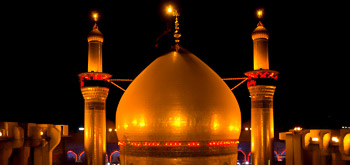
Shiite
represents the second largest denomination of Islam. Shiites believe Ali (peace be upon him) to be prophet"s successor in the Caliphate.
Resistance
Axis of Resistances refers to countries and movements with common political goal, i.e., resisting against Zionist regime, America and other western powers. Iran, Syria, Hezbollah in Lebanon, and Hamas in Palestine are considered as the Axis of Resistance.
Persian Gulf Cooperation Council
A regional political u n i o n consisting of Arab states of the Persian Gulf, except for Iraq.
Taliban
Taliban is a Sunni fundamentalist movement in Afghanistan. It was founded by Mohammed Omar in 1994.
Wahhabism & Extremism
Wahhabism is an extremist pseudo-Sunni movement, which labels non-Wahhabi Muslims as apostates thus paving the way for their bloodshed.
Kurds
Kurds are an ethnic group in the Middle East, mostly inhabiting a region, which spans adjacent parts of Iran, Iraq, Syria, and Turkey. They are an Iranian people and speak the Kurdish languages, which form a subgroup of the Northwestern Iranian branch of Iranian languages.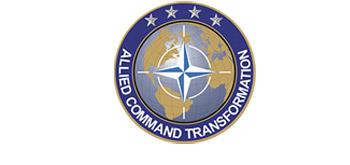
NATO
The North Atlantic Treaty Organization is an intergovernmental military alliance based on the North Atlantic Treaty which was signed on 4 April 1949.
Islamic Awakening
Refers to a revival of the Islam throughout the world, that began in 1979 by Iranian Revolution that established an Islamic republic.
Al-Qaeda
A militant Sunni organization founded by Osama bin Laden at some point between 1988 and 1989
New node

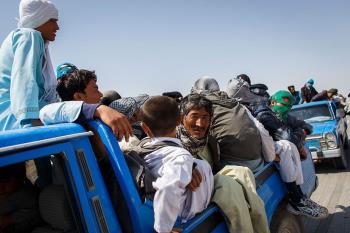
Report
Why’s Iran No Longer Accepting Afghan Immigrants?
Wednesday 16 July 2025
Saddam of Iraq waged against neighboring Iran.
However, over the part few months and amid the security developments in Iran followed by Israeli aggression, the Iranian officials have made a different decision on Afghan immigrants. Now Iran’s official policy is end of Afghans’ presence a ...

Analysis
Shadow of Collapse on Iraq’s Kurdistan Region
Wednesday 27 August 2025
،
Saddam Hussein’s regime to help him push back PUK forces and reclaim Erbil. The clashes dragged on until September 1998, when the two sides, under US mediation and pressure, finally signed a peace deal.
That agreement has long since lost its teeth as a mechanism for resolving disputes. The po ...
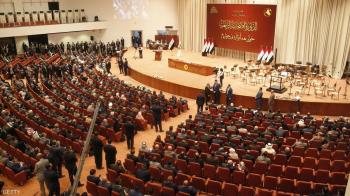
Report
Iraq’s Election Atmosphere Overshadowed by Massive Candidate Disqualifications
Wednesday 10 September 2025
،
Saddam Hussein before the US invasion of the country in 2003. In many instances, even open investigations or unproven allegations have been deemed sufficient for exclusion.
The current number of disqualifications has surpassed the record set in the 2010 election, where nearly 499 candidates were ba ...

News
Iranian Commander Says Israel Relies on US And NATO Support to Sustain Its War
Wednesday 24 September 2025
،
Saddam’s war on Iran and Israel’s assault, arguing that global powers armed both enemies. He said Iran’s struggle is not against “small enemies” but against global arrogance. Even after the Iraq war, he added, enemies resorted to sanctions, cultural warfare, and psychol ...

Analysis
Blair, a War Criminal Named for Trump’s Gaza Administration
Thursday 2 October 2025
،
Saddam Hussein’s Iraq. A year later, under his leadership, Britain joined NATO airstrikes against Yugoslavia. In 2000, he deployed troops to intervene in Sierra Leone’s civil war, and in 2001, after the September 11 attacks, backed American’s invasion of Afghanistan.
A tarnished p ...
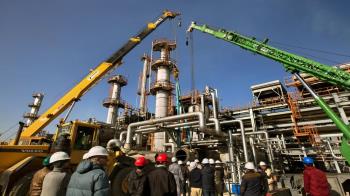
Analysis
Baghdad-Erbil Oil Exports Deal: From Home to Regional and International Geopolitical Impacts
Sunday 5 October 2025
،
Saddam Hussein's regime in 2003, Erbil began building its own energy infrastructure and started connecting oilfields to the Ceyhan pipeline via new links it constructed. This move allowed the semi-autonomous region to export oil largely independent of Baghdad.
This approach by the Kurds stirred ...

News
Shadow Man: What’s behind US Envoy’s Activism in Iraq?
Monday 10 November 2025
،
Saddam Hussein’s Baath regime, Sunnis enjoyed a privileged position, and many tribal leaders continue to blame Washington for their community’s current situation. Against this backdrop, Sawaya’s mission in Iraq is to rebuild Sunni trust and align them with US policies, a strategy a ...
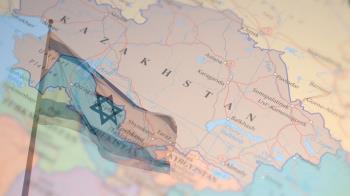
Analysis
Israel’s Creeping Influence in Central Asia a Threat to Iran’s Security Interests
Wednesday 12 November 2025
،
Saddam Hussein during the 1991 Persian Gulf War, Israel's past failures in engaging the Muslim world, and a general unfamiliarity with the region.
However, over time, these assumptions shifted. The primary catalyst for Israel's strategic reassessment was its confrontation with the Resistanc ...

Paper
What Does High Iraq Election Turnout Mean?
Wednesday 12 November 2025
،
Saddam Hussein, reflecting a decline in public trust in the political system and growing popular disillusionment with the effectiveness of successive governments.
Accordingly, this report will examine the main reasons for the increased participation, its political and social consequences, including ...
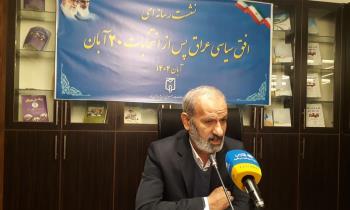
Report
Iraq Resistance Gained further Weight, US Failed Despite $2b Spending in Vote: Expert
Tuesday 18 November 2025
،
Saddam Hussein fell in 2003. These elections saw a rise in turnout rate after rounds of downward trend. The increase was reported 15 percent compared to the last election and it is expected that Iraqi election situation will influence the elections in other regional countries, and actually this incr ...


